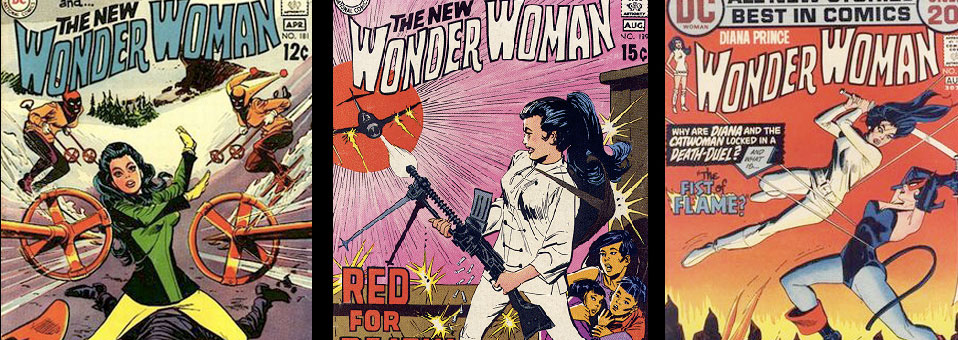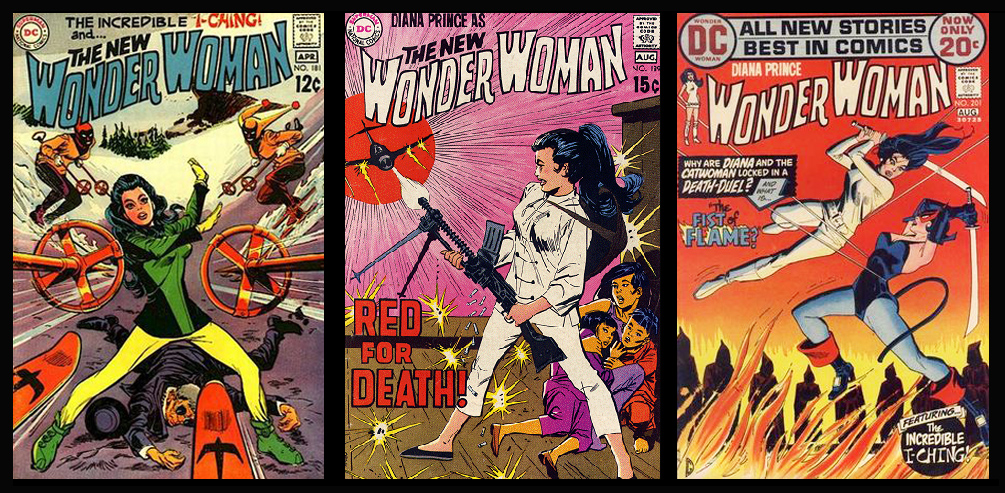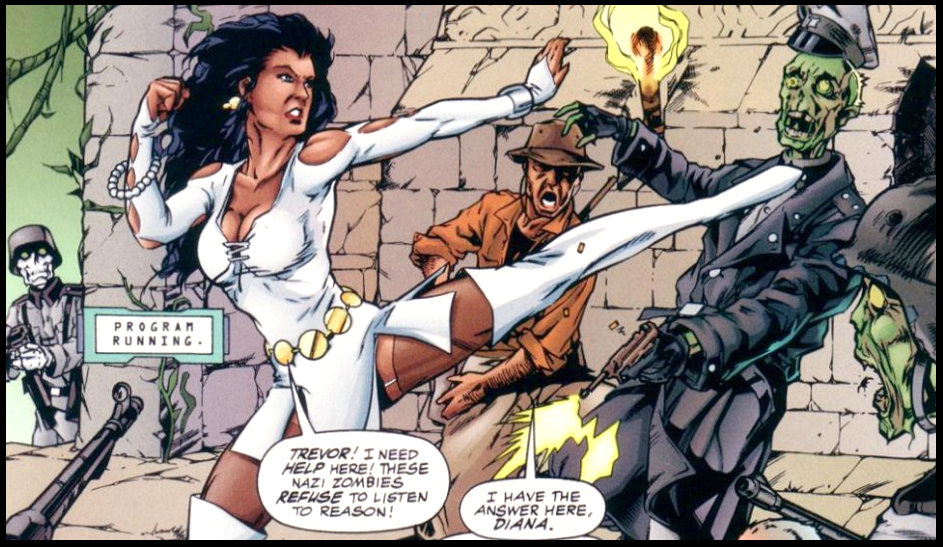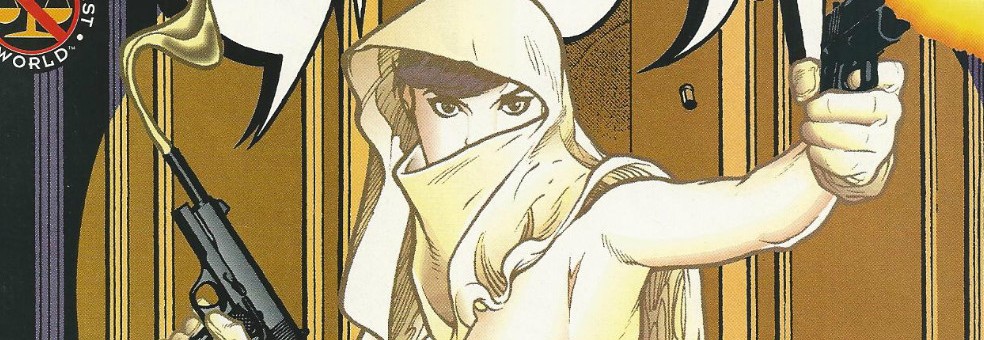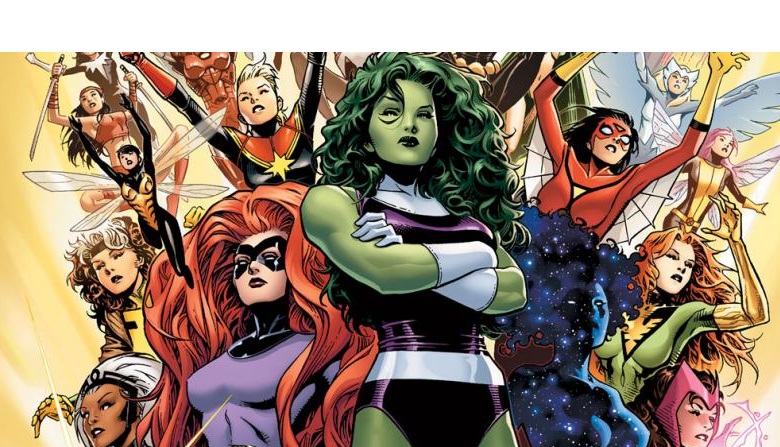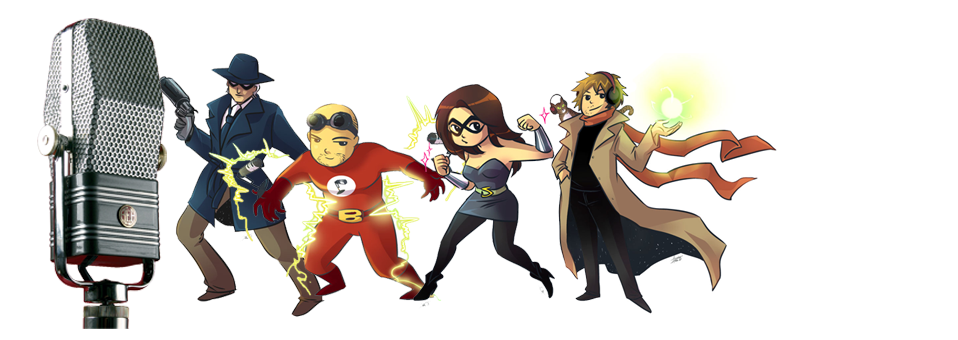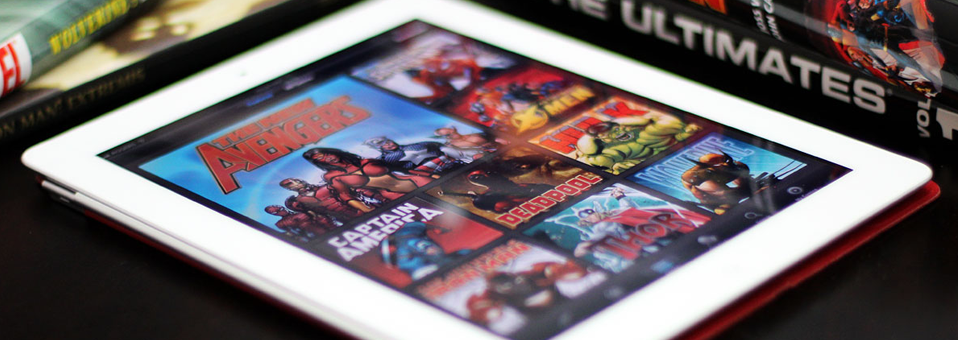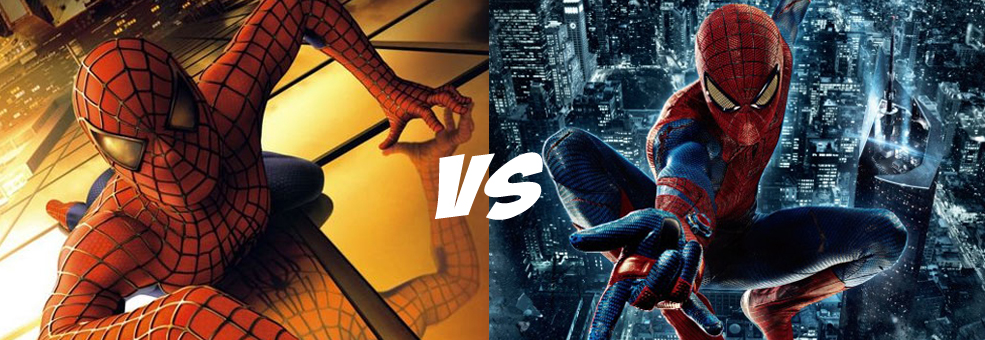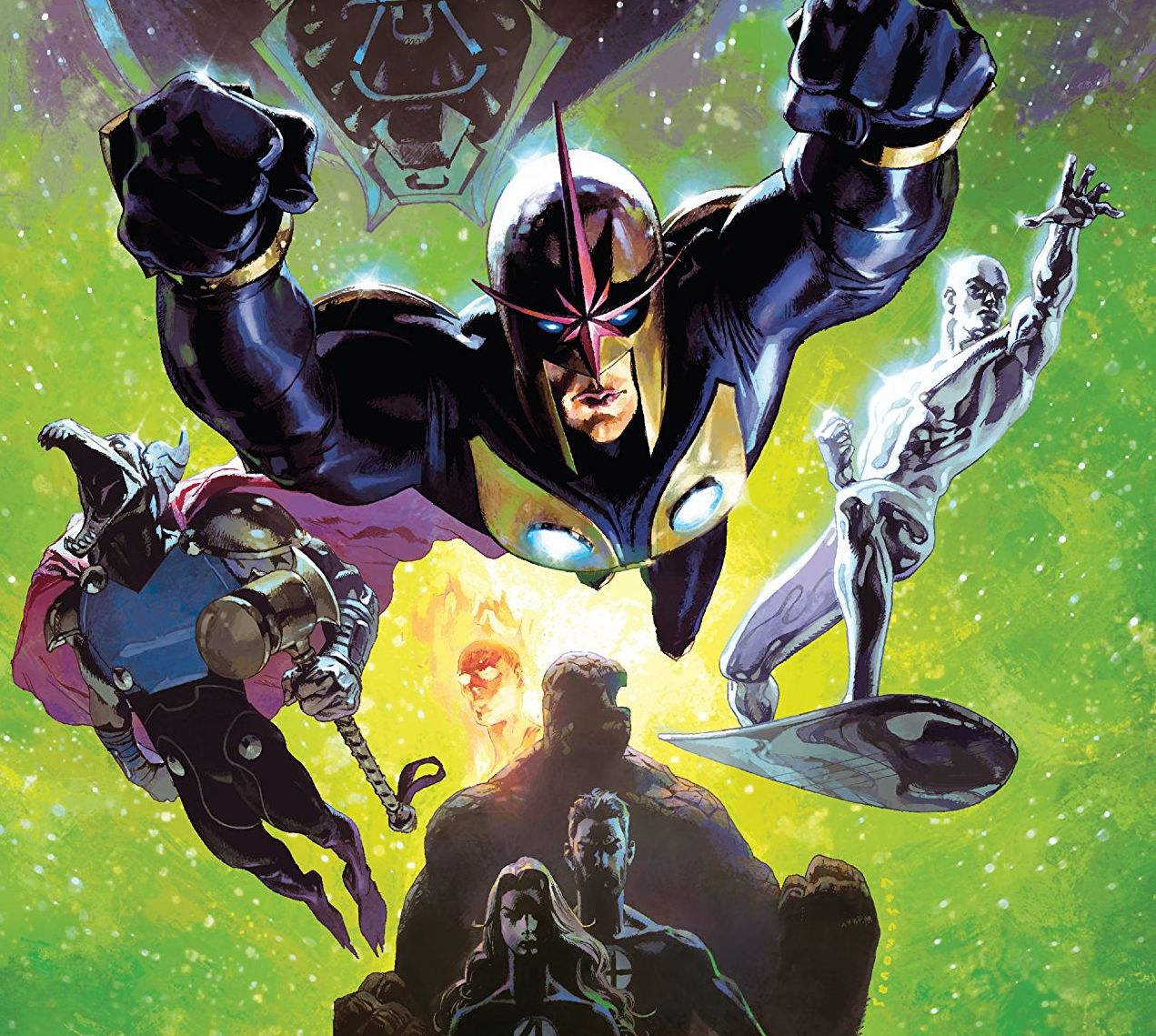By Alan Kistler
In 2011, DC Entertainment rebooted much of its comic book universe. Many things changed. Princess Diana of Paradise Island AKA Wonder Woman had her backstory altered. Rather than being a woman born of clay, mud, magic and a mother’s love, she is now a demigod fathered by Zeus, an origin story that had previously belonged to her apprentice Cassie Sandsmark AKA Wonder Girl, Hercules and other characters. Along with this, Diana has become a more aggressive warrior, more prone to using lethal tactics. But this is by no means the first time or strangest way that Wonder Woman has been altered in an attempt to increase her audience.
Consistency is an admirable, and often necessary, characteristic of storytelling. But in the late 1960s and throughout the 1970s, Wonder Woman’s book lacked this quality due to a rotating cast of creators. After being in charge of Wonder Woman’s book for many years, editor Robert Kanigher left the title, telling others he was happy to get to work on other, more serious characters now. Famous DC artist Carmine Infantino rose to editorial director and hired romance comic writer Jack Miller to take over the book, hoping this move would raise Wonder Woman’s low sales figures. But Miller only lasted a few issues and the series fell to the creative team of penciler Mike Sekowsky, inker Dick Giordano, and writer Dennis O’Neil.
Sekowsky, who worked on Justice League of America, was used to drawing the amazing Amazon. But the artist didn’t much care for Wonder Woman; he thought her origin and magic powers made her too difficult to relate to. It’s strange to think that out of DC’s superhero hall of fame – a millionaire who dresses like a bat, a test pilot entrusted with an alien magic ring, and a powerful sun god who spends half his time disguised as a human by donning glasses and an ill-fitting suit – Sekowsky would decide that the lady with a magical lasso and an advanced stealth plane was too far-fetched.
In any event, Denny O’Neil had similar concerns about Wonder Woman, thinking she would be more heroic if she were a person who had attainable skills and abilities rather than powers imbued by Olympus. This may not be surprising considering O’Neil’s preference for human heroes. His first story as a regular writer for Superman involved lowering the Man of Steel’s power level significantly. His later work on Green Lantern focused on putting the hero into situations where his power ring couldn’t directly help.
On his own, Sekowsky wrote an outline for a brand-new female character who was human. When he presented it at an editorial meeting, it was merged with O’Neil’s ideas for Diana and became the new plan for how to approach the amazing Amazon warrior.
First, let’s review the basic status of Wonder Woman before O’Neil and Sekowksy began their run. Princess Diana had grown up on Paradise Island, raised by the legendary Amazon warriors and her mother. After USAF pilot Steve Trevor crashed on the island, the Amazons decided it was time to send a representative into Man’s World and Diana was chosen during a competition. As “Wonder Woman,” she became famous as a hero all over Earth and was a founding member of the Justice League of America. She also maintained a secret identity as Yeoman Diana Prince, working directly alongside Steve Trevor. As Prince, Diana pulled back her hair into a professional style, wore thick-rimmed glasses, altered her voice and body language, and wore a uniform that wasn’t fitted, hiding her athletic form. Steve respected Yeoman Prince, but mainly had eyes for Wonder Woman, not realizing they were the same person. Wonder Woman loved Steve, though she wasn’t looking to settle down and she sometimes wondered if the guy truly appreciated her or was mainly impressed by her abilities.
O’Neil and Sekowsky’s relaunch began in Wonder Woman #178, published in 1968. The cover promised the start of a “new Wonder Woman” and featured the protagonist sporting a more modern look and painting Xs over posters of her classic costumed alter ego and her glasses-wearing military alter ego, which may not have been the best way to start things off. It implied to some readers that Diana was embarrassed by her previous nature. Meanwhile, the story within, however well-intentioned diluted Diana’s personality and showed a turn towards the superficial.
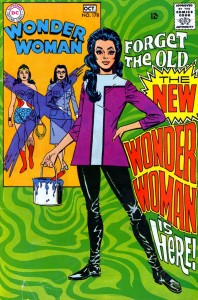 Wonder Woman #178 begins with Steven Trevor arrested on false charges. Diana Prince offers to go undercover and learn the truth, which involves blending in with a younger, more energetic crowd. She not only ditches her military uniform and glasses while letting her hair out, she actually spends a day hitting the salon, getting a makeover and shopping for an expensive, fashionable new wardrobe; all that for just one undercover mission. Along the way, she checks out her new hair and makeover and realizes, “Wow! I-I’m gorgeous! I should have done this ages ago!” A rather strange remark considering the whole purpose of “Diana Prince” was to disguise Wonder Woman’s natural and memorable beauty.
Wonder Woman #178 begins with Steven Trevor arrested on false charges. Diana Prince offers to go undercover and learn the truth, which involves blending in with a younger, more energetic crowd. She not only ditches her military uniform and glasses while letting her hair out, she actually spends a day hitting the salon, getting a makeover and shopping for an expensive, fashionable new wardrobe; all that for just one undercover mission. Along the way, she checks out her new hair and makeover and realizes, “Wow! I-I’m gorgeous! I should have done this ages ago!” A rather strange remark considering the whole purpose of “Diana Prince” was to disguise Wonder Woman’s natural and memorable beauty.
After proving his innocence, our superhero Wonder Woman is cuddling with Steve Trevor on the couch, only for him to remark that he might want to ask out Diana Prince, impressed with her undercover work and how she now seems sexier and more confident. For years, Wonder Woman had hoped that Steve would learn to appreciate her alter ego, Diana, concerned that he was mainly attracted to her superhuman power and glamor. But instead of elbowing Steve for talking about another woman (while his arm is around her), she actually becomes jealous of Diana, worrying, “I’ll lose him forever if I don’t do something to keep him interested in me! Wonder Woman must change!”
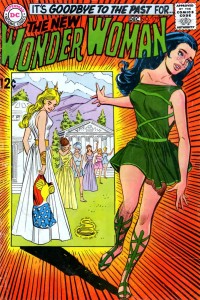 As if making Wonder Woman more concerned about her appearance and boyfriend wasn’t enough, the next comic issue ditched her supporting cast of strong sisters, her mother, her home, her costume, and her powers. In Wonder Woman #179, we learn that Paradise Island has to leave Earth’s dimension in order to preserve its magical energies. Diana can either join her sisters or remain on Earth and lose her magical abilities. Ultimately, she decides she can’t leave Steve. She relinquishes her Wonder Woman uniform, bracelets and lasso, and bids her family and home farewell.
As if making Wonder Woman more concerned about her appearance and boyfriend wasn’t enough, the next comic issue ditched her supporting cast of strong sisters, her mother, her home, her costume, and her powers. In Wonder Woman #179, we learn that Paradise Island has to leave Earth’s dimension in order to preserve its magical energies. Diana can either join her sisters or remain on Earth and lose her magical abilities. Ultimately, she decides she can’t leave Steve. She relinquishes her Wonder Woman uniform, bracelets and lasso, and bids her family and home farewell.
The next issue was the final step in creating the new idea of Wonder Woman. It starts with Steve Trevor’s murder. Before the body’s even cold, a blind martial arts master named I-Ching approaches Diana, offering to teach her how to compensate for her lack of powers and avenge Trevor’s death. Already an experienced fighter and still in top physical condition, Diana is able to master I-Ching’s lessons in just a few weeks. She leaves behind her military career, deciding to support herself by running a flower boutique instead. She also drops the dual identity of “Wonder Woman” entirely. Now she’s simply Diana Prince.
The shift from magical Amazon to Emma Peel-esque martial artist definitely drew new attention to the comic. Some enjoyed it, while others complained that the character had become unrecognizable. There’s a disturbing symbolic value behind Diana’s choice give up her powers, sisters, and mother, only to then partner with a father figure. The comic book covers now read Diana Prince: Wonder Woman, emphasizing the change. Gone were the magical enemies and the strange super-villains. Diana no longer worked with the Justice League and didn’t seem to encounter any super-powered colleagues in her series, although she did have a team-up (and date) with Superman in the pages of World’s Finest, a team-up her own comic later ignored completely. Diana Prince traveled the world as an international trouble-shooter, almost always wearing white outfits, encountering only non-super-powered adventurers and secret agents.
In later years, O’Neil did admit that he could understand some of the criticism brought against his direction for the character. He also regretted having named Diana’s mentor I-Ching. At the time, he did not take the actual writings of the I-Ching seriously, believing it was just part of a new “hippie vogue.” In a similar vein, he created a Batman villain during the 1970s who was a martial arts master and assassin known as the O-Sensei. But even this new direction didn’t stay consistent, since O’Neil left as writer and turned his duties over to Sekowsky, who immediately brought back Paradise Island (though not Diana’s powers). After some months, Sekowksy was replaced after disagreements with management over the direction of the series. For a few issues, editing was handled by Dorothy Woolfolk, a romance story editor who decades before had been part of the investigation into whether the writings of William Moulton Marston, creator of Wonder Woman, were appropriate for children.
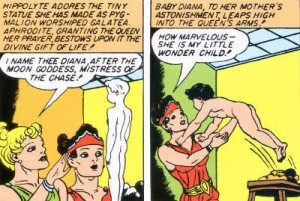 There was a growing group that protested the loss of Diana’s powers and visual iconography. O’Neil again became editor of the book and tried to quell concerns by hiring science fiction writer Samuel R. Delany to write two issues, one of which was a “Special Women’s Lib” story. But increasing pressure from readers led DC to discuss a return to Diana’s roots.
There was a growing group that protested the loss of Diana’s powers and visual iconography. O’Neil again became editor of the book and tried to quell concerns by hiring science fiction writer Samuel R. Delany to write two issues, one of which was a “Special Women’s Lib” story. But increasing pressure from readers led DC to discuss a return to Diana’s roots.
In 1972, DC Comics came under even greater scrutiny when the first issue of Ms. Magazine was released. Spearheaded by Gloria Steinem, the magazine’s very first cover featured Wonder Woman in her traditional costume, carrying a city block to safety while blocking a peaceful looking town from the dangers of a nearby war zone. The cover declared: Wonder Woman for President. The magazine included an article by Joanne Edgar entitled “Wonder Woman Revisited,” which criticized how Diana sacrificed her powers and true identity five years earlier, regarding it as an artistic decision that made her more submissive. The piece ended with the happy announcement that Wonder Woman was set to regain her abilities and costume in 1973.
In Wonder Woman #204, released in January of 1973, Robert Kanigher returned to the book and had Diana return to her old status quo. As for the new supporting member I-Ching, Kanigher decided it was best to wipe the slate clean, so he had him killed by a sniper. This same gunman also killed a character named Dottie Cottonman, an editor for a woman’s magazine, who may have been a reference to Dorothy Woolfolk. No one was sure whether to take the reference as a joke or real animosity.
But we’ve never fully forgotten the white-clad martial arts era Wonder Woman. In JLA #8 and #9 (both published in 1997), the Justice Leaguers are trapped in dream realities within their own minds. Wonder Woman finds herself dressed in white and rocking out some martial arts moves against Nazi zombies, which Steve Trevor brilliantly dispatches with maggots. In 2006, the story “Who is Wonder Woman?” has Diana temporarily retire from superheroics, becoming a government operative named Diana Prince who specializes in superhuman terrorism and shows a preference for all-white jumpsuits and tinted glasses. It even makes a reference to I-Ching, who appeared alive and well soon afterward in the Batman story “The Resurrection of Ra’s al Ghul.” So whatever its flaws, there was something interesting about Wonder Woman’s five year stint as a martial artist, something that speaks to some writers.
Storylines like this are, in my mind, examples of why characters like Wonder Woman don’t get completely ruined by bad ideas. I was willing to give the reboot a chance because I like to see a work before I fully judge it (even if my immediate reaction is “wait, wait, this is not the right course of action!”). After two years, I don’t think changing Diana’s origin has done anything to enhance the stories featuring her. They would’ve still worked if Diana had still been made of clay. What’s more, I’m an advocate that any quality that makes your hero stand out more should be treasured and embraced. Superman’s Fortress of Solitude is not at all like Batman’s cave and makes him seem like a science fiction fairy tale in the best way possible. Wonder Woman being born without the presence of man, an immaculate birth reminiscent of an independent Galatea, makes her stand out. Turning her into a demigod immediately makes her akin to Hercules and many other mythological figures.
But if the reboot teaches us anything, it’s that nothing is permanent, so I’m not worried about her being ruined. She’s bigger than one story arc and, as mentioned previously, the five years she spent as a non-powered troubleshooter now seems like a weird blip on the radar decades later. Eventually, good and powerful characters return to their roots, as long as readers keep caring and make their voices heard in a positive way.
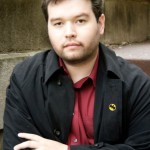 Alan Sizzler Kistler is an actor and author who bounces between New York City and Los Angeles. He is the host of “Stay Geeky” on YouTube and co-host of the podcast “Crazy Sexy Geeks” on iTunes. A contributor to various websites, Alan is the author of The Unofficial Game of Thrones Cookbook and the upcoming Doctor Who: A History, and is a contributor to the book Star Trek and History. He prefers his vampires to be scary and is still waiting to write a Wonder Woman movie. Find him on Twitter: @SizzlerKistler
Alan Sizzler Kistler is an actor and author who bounces between New York City and Los Angeles. He is the host of “Stay Geeky” on YouTube and co-host of the podcast “Crazy Sexy Geeks” on iTunes. A contributor to various websites, Alan is the author of The Unofficial Game of Thrones Cookbook and the upcoming Doctor Who: A History, and is a contributor to the book Star Trek and History. He prefers his vampires to be scary and is still waiting to write a Wonder Woman movie. Find him on Twitter: @SizzlerKistler

